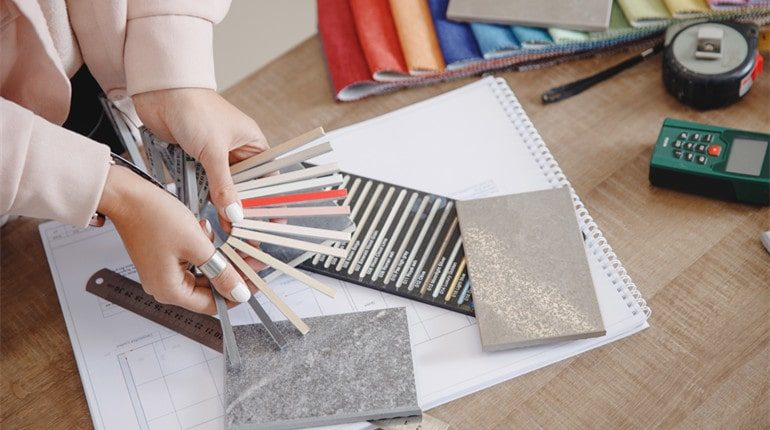Epoxy projects are becoming increasingly popular for DIYers, as they’re a simple and effective way to build or repair practically anything. From furniture to floors, epoxy can be used in many different ways. It’s always good to learn the basics of working with epoxy resin and the tools you need for proper application. However, before you start an epoxy project, there are some important things to consider.
Understand the Deep Pour Epoxy Coverage
Knowing the coverage when working with deep pour epoxy. To get an even finish, you will need to apply multiple layers of the epoxy, allowing each layer to dry before applying the next. With the correct information on the quantity of epoxy you need, you don’t end up with too much or too little.
You can also use online calculators or apps to help with the measurements and coverage area calculations. Find a tool that is user-friendly and easy to use. Getting the figures right can be tricky for both a beginner, and an expert, but by using a deep pour epoxy calculator, the task will be much easier.
By entering the dimensions such as length, width, and thickness, a proper tool should calculate the total area, volume, and amount of epoxy you will need for your project. Learn about other factors that influence the volume you may need to use. This includes the type of product, the recommended coverage rate, and any other materials you may need to include.
Floor Preparation
Working with epoxy resin requires a smooth, clean surface for the best results. Before laying down your epoxy, make sure to properly prepare your floor by cleaning and removing dirt, dust, and other debris. You may also need to patch any cracks or holes in the floor before continuing.
Many times, people forget about this essential step and end up with an uneven, bumpy floor. Achieving even coverage is critical when working with epoxy resin, so be sure to take the time to properly prepare your floor before starting your project.
The trick to an even finish is to use a level and straightedge. You can draw lines on the floor with a pencil, chalk, or tape to ensure that all your epoxy resin coats are evenly distributed.
Choosing Your Epoxy Resin
With so many types of epoxy resin on the market, selecting the right one for your project can be daunting. Fortunately, there are a few things you can look out for that will help make your decision easier.
Firstly, consider the environmental conditions where you’re applying the epoxy resin. Different types are designed to withstand varying temperatures and humidity levels, so be sure to choose a suitable product for your particular environment.
Secondly, consider the type of surface you’re working with and select an epoxy resin specifically designed for that material. For example, if you’re applying epoxy to a concrete floor, opt for one labeled “concrete and stone coatings.”
Surface Protection
Epoxy resin can be tough to remove from surfaces once it dries, so you must take steps to protect any nearby items before you begin your project. Cover all furniture, walls, and floors so that any splashes or spills won’t be a problem.
Wear protective gear such as gloves, a mask, goggles, and clothing that covers your arms and legs for added safety. Additionally, when working on a ladder, be sure to wear a harness.
Again, depending on the type of floor or surface you’re working with, additional protection may be needed. For instance, when using epoxy resin on wood floors, you should use a vapor barrier to protect against moisture infiltration.
Tools for Application
You will need some special tools for applying and finishing the epoxy resin. Be sure to have the following items on hand:
• A squeegee or trowel for spreading the resin
• A power mixer for mixing and stirring the epoxy
• Plastic sheeting to protect surrounding surfaces from any spills
• Paint brushes and rollers for creating a smooth, even finish
When purchasing these tools, pay attention to quality, as low-grade materials will only last for a while and could cause poor results. Besides, the better quality you invest in, the more money you’ll save in the long run.
Mixing and Application
Epoxy resin is usually sold as two separate components that must be mixed before application. Mixing the two parts thoroughly is essential for proper curing, so take your time with this step and use a slow speed when stirring the mixture. Be sure not to leave any unmixed material in the container.
Once your mixture is ready, you can begin applying it to your floor. Start at one end of the room and work your way across until the entire area has been covered with a thin layer of epoxy resin. Allow this first coat to dry completely before moving on to the next step.
Room Temperature and Humidity
Epoxy typically requires a temperature of about 70-75 degrees Fahrenheit for optimal results. The temperature should also be consistent and not fluctuate too much. If you’re working in colder temperatures, use a space heater to help maintain the right level of warmth.
Additionally, humidity levels should remain low throughout the project; ideally, no more than 50%. Consider using a dehumidifier if your room is too humid or damp.
Curing Time
The duration varies depending on several factors, such as temperature and humidity. It’s essential to give the epoxy resin enough time to cure for it to reach its full strength and durability.
For best results, be sure to check the manufacturer’s instructions before starting your project and allow at least one day for any coats of epoxy resin you apply. Also, keep in mind that temperatures below 50 degrees Fahrenheit can significantly extend the curing time, so plan accordingly.
There are instances when you may need to accelerate the curing time. If this is the case, be sure to use a product specifically designed for that purpose, as some accelerators can negatively affect the quality of your finish.
Once the epoxy has cured, use sandpaper to buff and smooth any rough or uneven spots. You can also add texture by applying lines or patterns with chalk or tape to ensure that all your epoxy resin coats are evenly distributed. Finally, check for any air bubbles and patch up as needed.
Epoxy resin is a great way to give your floors a durable and attractive finish, but it’s vital to be well-informed before you start any project. When working with deep-pour epoxy, pay attention to mixing directions, room temperature and humidity levels, curing times, and coverage area calculations. Keep these tips in mind, and you’ll surely get great results.



